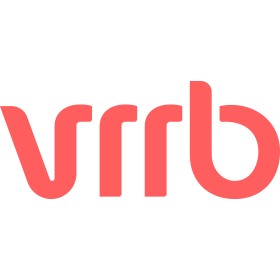
8 Best Blogging Techniques For Developers
Technology has improved over the years, and the blogosphere has attracted so many blogs that it takes an extra effort to stand out from the crowd. In this article we will mention about 8 best blogging techniques.
Many people make mistakes when starting a blog, and if you need the blog for your business, not for personal use, you need to put many things into consideration to ensure that you are getting the best.
Blogs are one of the best digital marketing tools that could yield returns for your business if used effectively. It helps you engage better with customers and also provides them with enough information about your products or services.
Hubspot survey has also found that 60% of businesses who blog acquire more customers. The results from blogging have pushed many business owners to start a blog.
However, managing a blog is beyond just creating one with a good hosting provider but deliberately applying techniques that will put you ahead of others. These techniques will save you from many of the mistakes most small business start-ups make with their blogs.
As easy as managing a blog might seem, it takes a lot of personal dedication to make it a successful blog that brings you, valuable customers.
8 Best Blogging Techniques For Developers
Below are some of the best blogging techniques that will help improve your blog:
1. Choose a Great Platform
The most basic, yet one of the most important aspects of creating a blog is choosing the right platform. There are different blogging platforms out there, which makes it quite a daunting task to just settle for one.
You may have to compare and contrast to get the one that suits you best and will be beneficial for your business. WordPress is one of the biggest blogging platforms with lots of benefits attached, including countless plugins, add-ons and easy ways to design your blog.
There are also others like Wix, Blogger, Tumblr, Medium, Squarespace, Joomla, Ghost, and Weebly. Check out the pros and cons of each and go for what’s best for you and your business.
2. Get Ideas From Your Audience
Your blog should be created from the perspective of your audience. Write what they want to see and read and to give them the best, it’s best to ask for their ideas.
Asking for their ideas is a great way to connect with your audience; to let them know that they matter and that their voices are heard. However, you need to get creative with it so that it doesn’t seem like you are completely out of original ideas and always need their help.
An easy way to do this is to ask open-ended questions, like what they plan on doing at a particular time or what they want.
Attach these questions to a blog post or valuable social media post to ensure that you have given them value before asking a random question. Also, focus on your most loyal audience, the ones subscribed to your blog and keeps coming back. See what brings them back and what they enjoy reading to know what to be consistent with.
3. Start your Blog with Own Domain
A domain is simply the URL of a website and creating your own domain helps with self-branding. Rather than having a domain name like xyz.wordpress.com, you could simply have xyz.com. This makes you look professional and more presentable to your customers.
4. Look for a Good Hosting Provider
It is important to have a professional web hosting for your business, as it could help improve the growth of your company and also yield amazing results.
Good hosting providers are not so difficult to find and most web hosts these days allow easy WordPress installation to make it easy for people with no technical experience.
Some of the benefits of getting a good host provider include reliability, technical support, SEO opportunities, data management, design and style, data recovery and unlimited space.
5. Write Relevant and Unique Content
Creating relevant and unique content not only appeals to your audience and makes them see value in your website but also helps improve your SEO score, which is needed for your website to grow.
Don’t try to copy content; always be original. Search algorithms rate unique content, thereby increasing your SEO rankings. On the other hand, sites with duplicate content could be penalized from search engines, and that won’t be good for your business.
6. Use SEO Friendly Theme
The theme you choose for your blog can affect your SEO, and you will want your page to be easily found by your target audience.
As a newbie blogger, you may want to invest in a premium, professional and SEO-friendly template that will increase the reach of your content on the web.
Some of the things that define an SEO-friendly theme includes a fast upload speed, valid coding, social media integration, plugins, and a well-structured website.
7. Take Advantage of Social Media
Social media has been a great promotion tool over the years, especially popular platforms like Facebook, Twitter, Instagram, and Pinterest.
These platforms can direct a lot of traffic to your website; you just have to hit that button and share your content as far as you can.
Beyond just sharing, you will also have to constantly engage with your audience and improve your customer service via social media.
If maximized well, social media can change your entire blog experience and yield a productive result. Also, as you continue to share your content, your SEO rank will improve, as it confirms credibility.
8. Use Relevant Keywords
People constantly search for various keywords on the internet, and by using relevant keywords in your content that pertains to your business, you could drive targeted web traffic to your website.
Search engines use keyword relevancy to determine what your page is about and rank their search results in order of relevance.
These are some of the best blogging techniques that will help improve your website if maximized well. The amount of effort and deliberation you put into your website determines what to expect from the outcome.
























